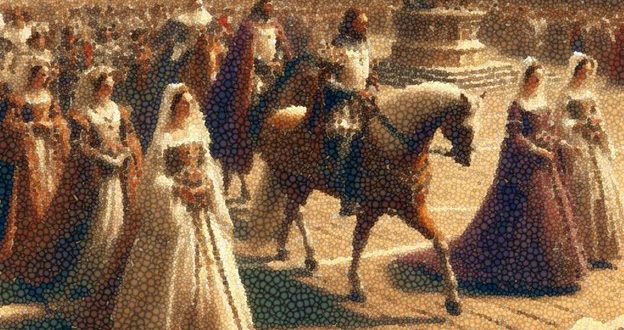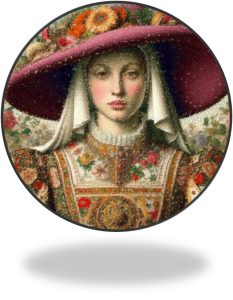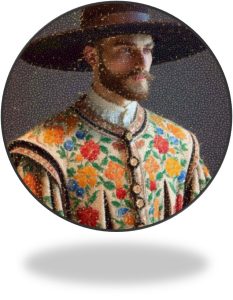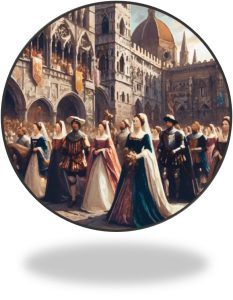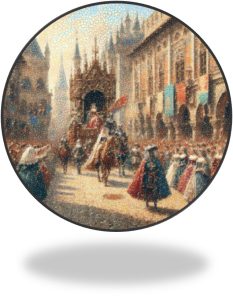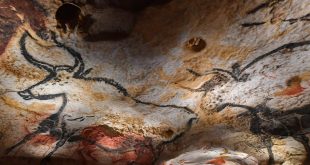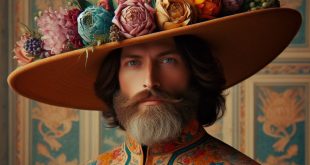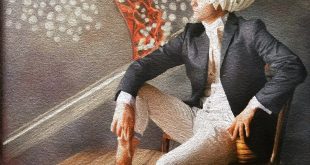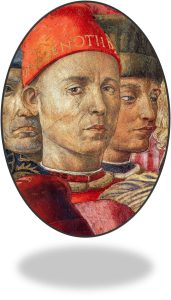 Benozzo Gozzoli, a testimony to the power of art
Benozzo Gozzoli, a testimony to the power of art
From Italian Renaissance painter renowned for his captivating murals, we want to delve into the distinctive features of his pictorial style. You will be fascinated by the festive processions full of life, movement and sense of occasion frescoed by Benozzo Gozzoli https://meetingbenches.com/2016/05/the-man-called-benozzo-trained-as-a-goldsmith-he-will-become-painter/. How can you forget his meticulous attention to detail, his finely dressed figures, the accessories and architectural elements that surround them? His style? Observe these digital images that we have created for you, you will discover that they are characterized by elegance, elongated shapes and richly decorated backgrounds.
Even with digital art you can create landscapes realistically, you just need to add depth and context to the scenes. In inviting you to appreciate the works of this extraordinary painter, we are certain that his ability to instill joy and precision in his frescoes will leave an indelible mark on your memories.
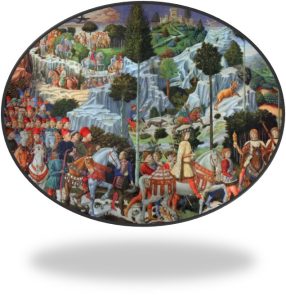 We want to talk to you about a cycle of frescoes, a truly extraordinary work which, according to the very personal criteria of its author, celebrates the first Florentine Renaissance with descriptive meticulousness. The author of that fresco, Benozzo Gozzoli, still fascinates tourists who enter the Palazzo Medici Riccardi https://www.museobenozzogozzoli.it/it/corteo-dei-magi.html. The desire of every visitor is to admire the Chapel of the Magi, a famous cycle of frescoes painted by Benozzo Gozzoli in 1459. The chapel, originally quadrangular, without windows and with a small apse, today has a corner due to seventeenth-century works. The theme of the frescoes, the Cavalcade of the Magi, is a pretext to represent a political figure of the Medici family, Lorenzo the Magnificent, flanked by his father Piero and his grandfather Cosimo the Elder. Also, part of this representation is Pope Pius II Piccolomini, the fifteen-year-old Galeazzo Maria Sforza and Sigismondo Malatesta, lord of Rimini.
We want to talk to you about a cycle of frescoes, a truly extraordinary work which, according to the very personal criteria of its author, celebrates the first Florentine Renaissance with descriptive meticulousness. The author of that fresco, Benozzo Gozzoli, still fascinates tourists who enter the Palazzo Medici Riccardi https://www.museobenozzogozzoli.it/it/corteo-dei-magi.html. The desire of every visitor is to admire the Chapel of the Magi, a famous cycle of frescoes painted by Benozzo Gozzoli in 1459. The chapel, originally quadrangular, without windows and with a small apse, today has a corner due to seventeenth-century works. The theme of the frescoes, the Cavalcade of the Magi, is a pretext to represent a political figure of the Medici family, Lorenzo the Magnificent, flanked by his father Piero and his grandfather Cosimo the Elder. Also, part of this representation is Pope Pius II Piccolomini, the fifteen-year-old Galeazzo Maria Sforza and Sigismondo Malatesta, lord of Rimini.
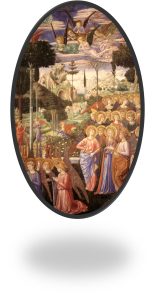 The frescoes, which develop in the area surrounding the visitor, produce from nowhere the impression of admiring an endless procession of characters. The representation of the idea of wealth, pomp and abundance of the Byzantine dignitaries is illuminated by the artist Benozzo Gozzoli with rare and elegant mastery https://www.bing.com/videos/riverview/relatedvideo?&q=benozzo+gozzoli+corteo+magi&qpvt=%20benozzo+gozzoli+corteo+magi&mid=4DE70F310CF750EDE4644DE70F310CF750EDE464&FORM=VRDGAR. The background landscape is also described realistically, with details that blend and organize botanical and zoological documentation of the time. Born in 1420 in the village of San Colombano, near Scandicci, Benozzo Gozzoli moved with his family to Florence, a city where he received artistic training for a decade from the master and painter Beato Angelico. Around 1438, Benozzo created an octagonal tablet that decorated the front of a chest. Shortly after 1440, however, he executed the Madonna and Child with nine Angels, currently exhibited in the National Gallery in London.
The frescoes, which develop in the area surrounding the visitor, produce from nowhere the impression of admiring an endless procession of characters. The representation of the idea of wealth, pomp and abundance of the Byzantine dignitaries is illuminated by the artist Benozzo Gozzoli with rare and elegant mastery https://www.bing.com/videos/riverview/relatedvideo?&q=benozzo+gozzoli+corteo+magi&qpvt=%20benozzo+gozzoli+corteo+magi&mid=4DE70F310CF750EDE4644DE70F310CF750EDE464&FORM=VRDGAR. The background landscape is also described realistically, with details that blend and organize botanical and zoological documentation of the time. Born in 1420 in the village of San Colombano, near Scandicci, Benozzo Gozzoli moved with his family to Florence, a city where he received artistic training for a decade from the master and painter Beato Angelico. Around 1438, Benozzo created an octagonal tablet that decorated the front of a chest. Shortly after 1440, however, he executed the Madonna and Child with nine Angels, currently exhibited in the National Gallery in London.
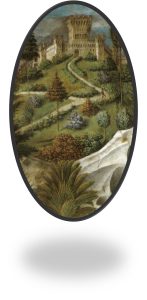 In 1445, Benozzo Gozzoli undertook to collaborate in the construction of the Door of Paradise of the Baptistery of Florence https://www.finestresullarte.info/opere-e-artisti/le-porte-del-battistero-di-firenze-capolavoro-di-Lorenzo%20Ghiberti. Two years later, in Rome, he collaborated on the decoration of a chapel in the Apostolic Palace. In 1448, he refined his art in frescoing the Niccolina Chapel. Having moved to Umbria in 1450, Benozzi Gozzoli created his first independent work: the Annunciation of Narni. In the same year he began the decoration of the parish church of San Fortunato in Montefalco. The Madonna of Humility with saints, for the College of San Gerolamo in Perugia, was signed and dated by him in 1456. Benozzo returned to Florence in 1459, married the daughter of a textile merchant and began the completion of the Chapel of the Magi in Medici Palace. His Madonna and Child with Angels, dating back to the year 1460, can be admired in Detroit. The predella scene with Herod’s Feast, one of his works from 1462, awaits you at the National Gallery of Art in Washington.
In 1445, Benozzo Gozzoli undertook to collaborate in the construction of the Door of Paradise of the Baptistery of Florence https://www.finestresullarte.info/opere-e-artisti/le-porte-del-battistero-di-firenze-capolavoro-di-Lorenzo%20Ghiberti. Two years later, in Rome, he collaborated on the decoration of a chapel in the Apostolic Palace. In 1448, he refined his art in frescoing the Niccolina Chapel. Having moved to Umbria in 1450, Benozzi Gozzoli created his first independent work: the Annunciation of Narni. In the same year he began the decoration of the parish church of San Fortunato in Montefalco. The Madonna of Humility with saints, for the College of San Gerolamo in Perugia, was signed and dated by him in 1456. Benozzo returned to Florence in 1459, married the daughter of a textile merchant and began the completion of the Chapel of the Magi in Medici Palace. His Madonna and Child with Angels, dating back to the year 1460, can be admired in Detroit. The predella scene with Herod’s Feast, one of his works from 1462, awaits you at the National Gallery of Art in Washington.
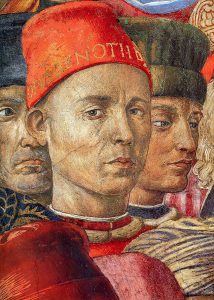 In 1467, he left San Gimignano to go to Pisa, where the artist opened a workshop for the creation of frescoes for the city’s monumental cemetery. Around 1480, Benozzo Gozzoli painted a fresco in Volterra that served as the backdrop to a terracotta nativity scene with the Cavalcade of the Magi. In 1495, having returned to Florence for a few months after the expulsion of the Medici, he moved to where his children lived, in Pistoia. The day before his death, his sons sold two paintings, the Descent from the Cross and the Resurrection of Lazarus, created in collaboration with their father. By observing them, you will discover that the preaching of Girolamo Savonarola https://www.througheternity.com/en/blog/history/savonarola-in-florence-visions-of-the-apocalypse.html had determined the disappearance of the fairy-tale world in the last two works by Benozzo, victim of the plague of 1497. The intellectual properties of the images that appear on this blog correspond to their authors. The only purpose of this site is to spread the knowledge of these creative people, allowing others to appreciate the works. If you want to know our author travel already published, you can type http://meetingbenches.com/category/author_travels/.
In 1467, he left San Gimignano to go to Pisa, where the artist opened a workshop for the creation of frescoes for the city’s monumental cemetery. Around 1480, Benozzo Gozzoli painted a fresco in Volterra that served as the backdrop to a terracotta nativity scene with the Cavalcade of the Magi. In 1495, having returned to Florence for a few months after the expulsion of the Medici, he moved to where his children lived, in Pistoia. The day before his death, his sons sold two paintings, the Descent from the Cross and the Resurrection of Lazarus, created in collaboration with their father. By observing them, you will discover that the preaching of Girolamo Savonarola https://www.througheternity.com/en/blog/history/savonarola-in-florence-visions-of-the-apocalypse.html had determined the disappearance of the fairy-tale world in the last two works by Benozzo, victim of the plague of 1497. The intellectual properties of the images that appear on this blog correspond to their authors. The only purpose of this site is to spread the knowledge of these creative people, allowing others to appreciate the works. If you want to know our author travel already published, you can type http://meetingbenches.com/category/author_travels/.
 Meeting Benches World art in all forms
Meeting Benches World art in all forms
